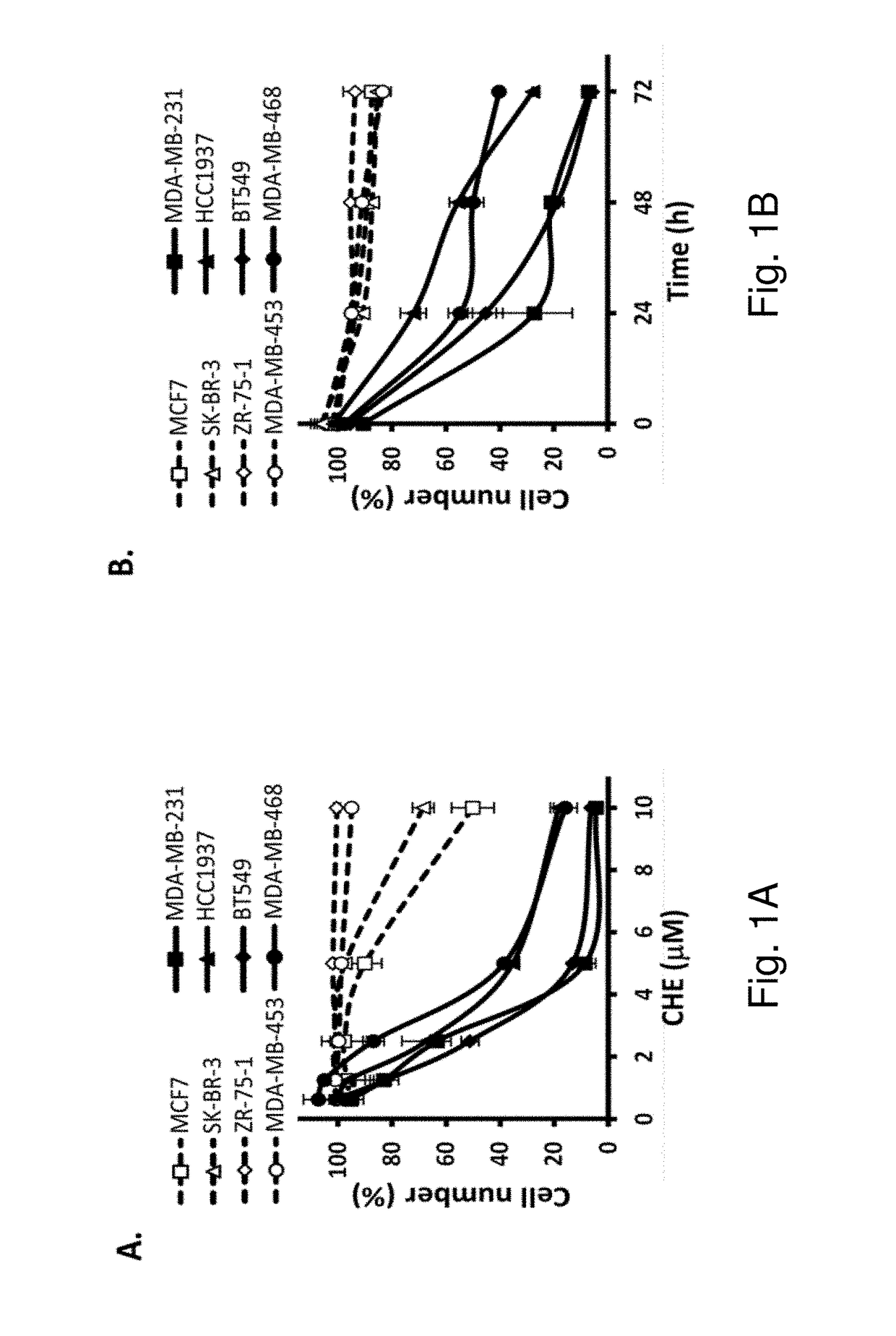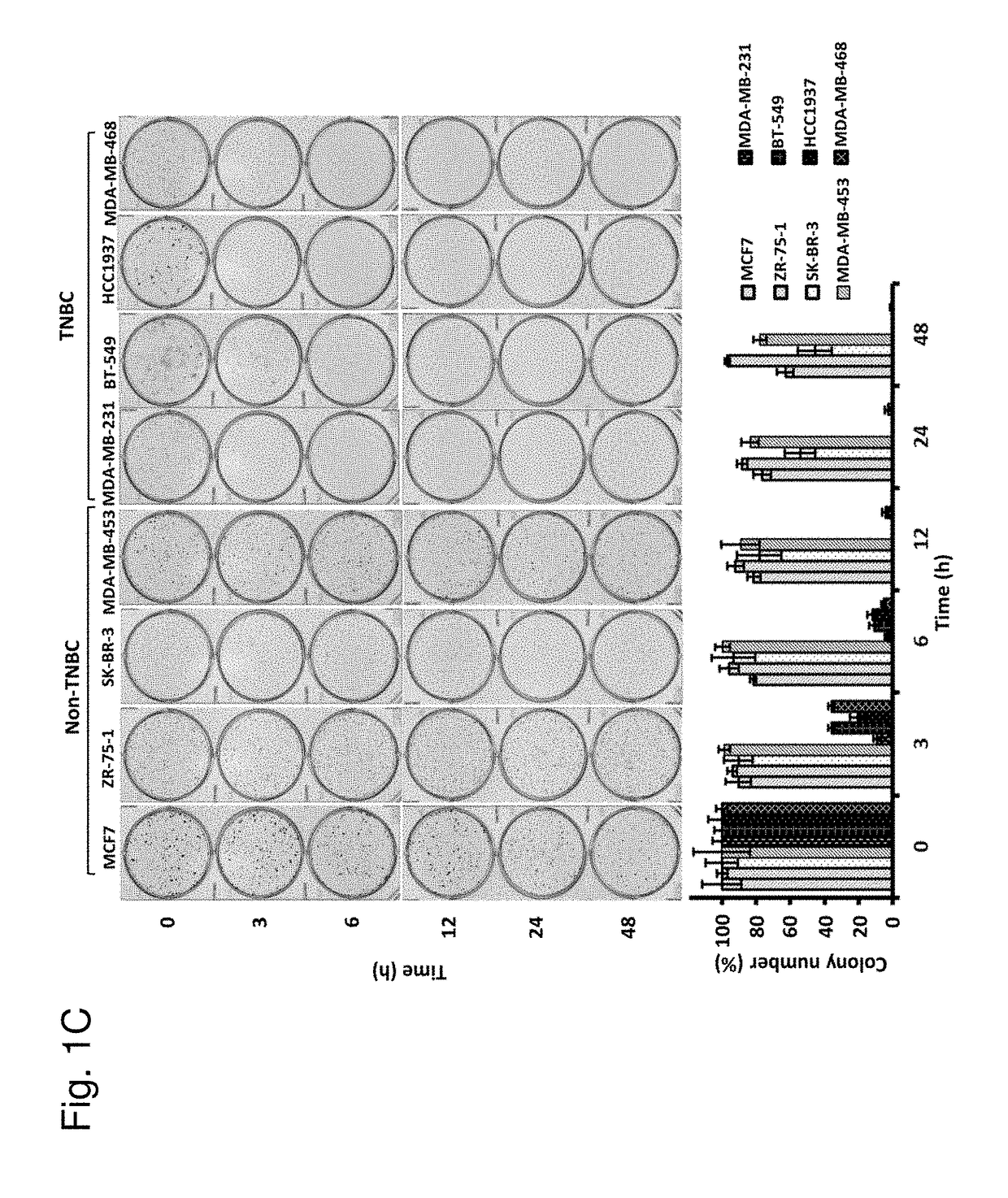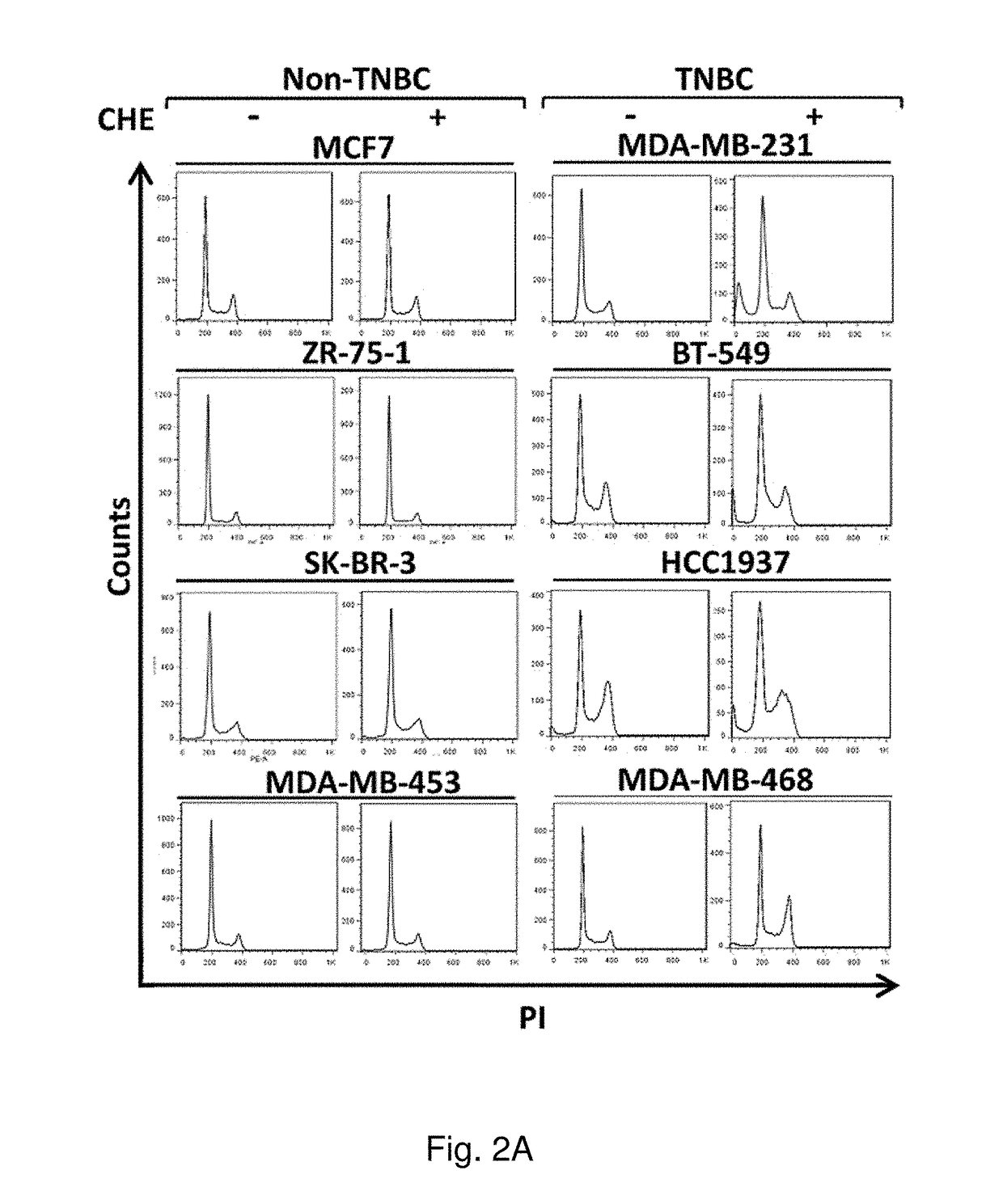Protein kinase C inhibitor for treating triple-negative breast cancer
a technology of protein kinase and breast cancer, which is applied in the field of treating triple-negative breast cancer with a protein kinase c inhibitor, can solve the problems of tnbc usually having a poor prognosis, no effective treatment thereafter, and a shorter overall survival chance compared with other breast cancer subtypes
- Summary
- Abstract
- Description
- Claims
- Application Information
AI Technical Summary
Benefits of technology
Problems solved by technology
Method used
Image
Examples
Embodiment Construction
[0017]As used herein and in the claims, “comprising” means including the following elements but not excluding others.
[0018]One potential target agent for TNBC treatment is protein kinase C (PKC), which is a serine / threonine protein kinase family of enzymes and plays a critical role in several disease processes including cancer, diabetes, autoimmune diseases, heart failure, Parkinson's disease, Alzheimer's disease, and many other important human diseases. An inverse relationship between ER and PKC activity and abundance in human breast cell lines and tumors has been firmly established. PKC is also elevated in malignant versus normal breast tissue, and overexpression of PRKCA (PKCα) is associated with antiestrogen resistance and tumor aggressiveness. PRKCA is shown to be a central signaling node and therapeutic target for breast cancer stem cells, which share similar profile of cell surface markers with TNBC. Furthermore, PRKCA is directly associated with TNBC both in cell lines and i...
PUM
| Property | Measurement | Unit |
|---|---|---|
| volume | aaaaa | aaaaa |
| pH | aaaaa | aaaaa |
| temperature | aaaaa | aaaaa |
Abstract
Description
Claims
Application Information
 Login to View More
Login to View More - R&D
- Intellectual Property
- Life Sciences
- Materials
- Tech Scout
- Unparalleled Data Quality
- Higher Quality Content
- 60% Fewer Hallucinations
Browse by: Latest US Patents, China's latest patents, Technical Efficacy Thesaurus, Application Domain, Technology Topic, Popular Technical Reports.
© 2025 PatSnap. All rights reserved.Legal|Privacy policy|Modern Slavery Act Transparency Statement|Sitemap|About US| Contact US: help@patsnap.com



